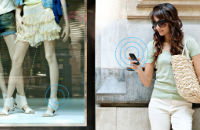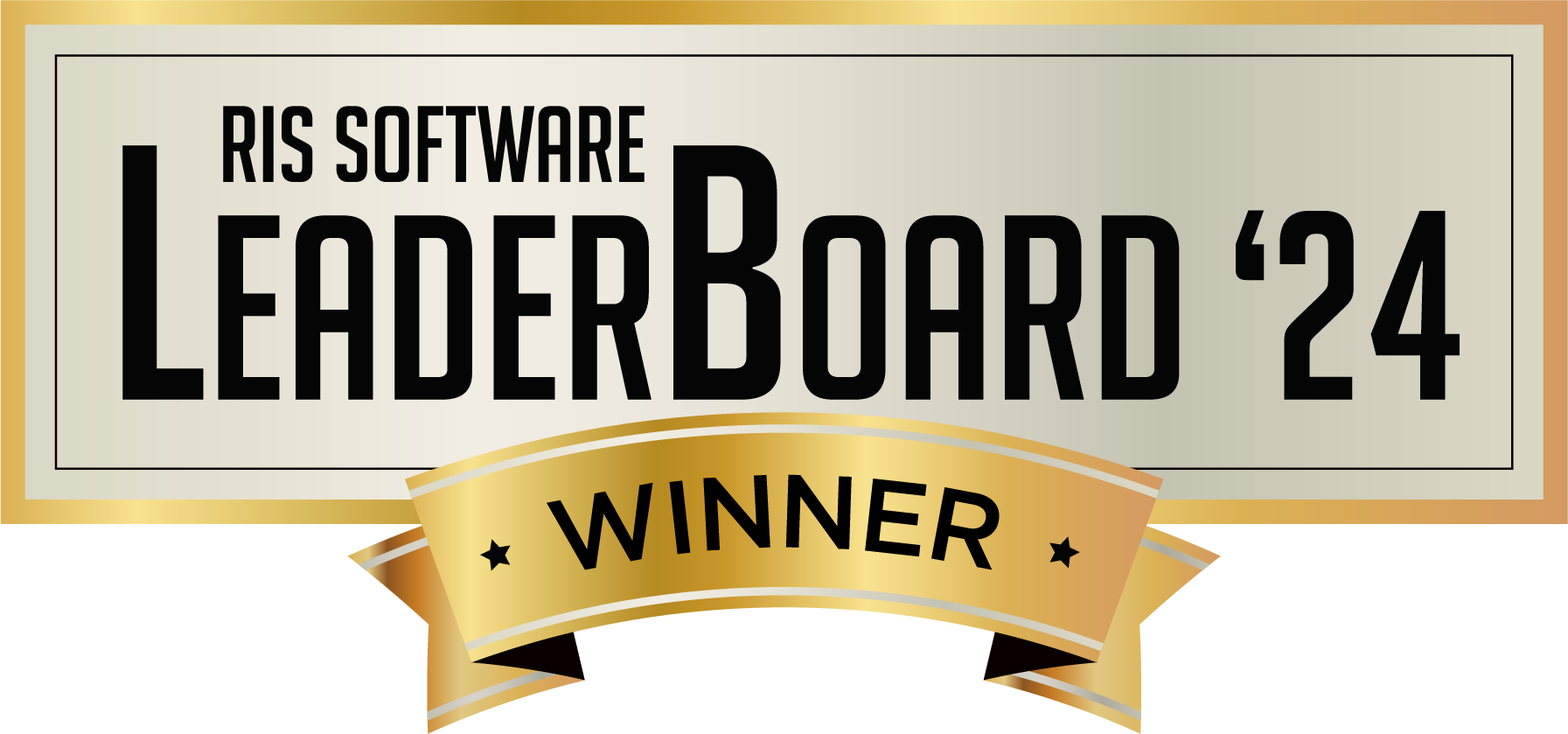The Internet of Things for Retailers: A Beginner’s Guide
What IS the Internet of Things?
The simplest way to describe the “Internet of things” (IoT) is as a system of interconnected devices that are embedded within various ordinary objects, including smartphones, thermostats, washing machines, vehicles and so on, to collect and exchange data over the Internet.
This data varies depending on the purpose of the device. For instance, smartphones can track the user’s location, while many modern vehicles are able to monitor tire pressure and notify the driver when it’s low. All of this data can either be transferred from one device to another or stored in the cloud.
In many ways, the IoT is a nebulous concept – it covers such a broad spectrum of devices and software applications that it seems almost intangible. However, it does have plenty of real-world uses, particularly in the retail market, which is what we’ll be covering in this whitepaper.
If you’re not too sure of the role that IoT plays for retailers, this whitepaper is a great first step in familiarizing yourself with the concept, and perhaps developing a strategy for future integration.
How the IoT helps retailers
As the IoT technology becomes more affordable, the demand for it among retailers grows. According to MarketsandMarkets, the global worth of the IoT in the retail market is expected to be USD $35,640 million by 2020, up from USD $14,280 million in 2015.
So, why is the IoT such a big deal? Here’s just a fraction of what it allows retailers to do:
- Manage their inventory in real time
- Analyze in-store foot traffic
- Take mobile payments
- Collect customer information
For instance, a retailer can identify customers that have downloaded its mobile app and then cater its services and messaging to them based on their purchase history and interests. A retailer can also attach radio frequency tags to its products to track their location and avoid potential losses.
By linking physical devices to software analytics, retailers can get a much deeper understanding of their business and in turn achieve superior results.
Specific IoT devices that retailers can use
While it’s best to approach the IoT as a way of thinking, more so than a set of specific products or devices, there are several recommendations that we can make as a starting point:
1 – In-store technology
Online stores have been collecting customer data for as long as they’ve existed, which has given them an enormous competitive advantage over their brick-and-mortar counterparts. With these devices, physical stores can do the same – without compromising on their overall shopping experience:
Smart shelves. These shelves come with embedded sensors that allow retailers to remotely track what’s on them and make real-time price adjustments. This enables them to clearly see which products are in high demand and in turn avoid being out of stock.
Every time the inventory is low, smart shelves will notify the pertinent personnel, including the warehouse / direct shipment vendor, to ensure immediate replenishment.
Beacons. Retailers use these devices to gain valuable insight on frequent store visitors, including their purchase histories and personal preferences. With this information, retailers can provide customers with personalized offers and in-store shopping information right when it actually matters.
Target has recently used beacons across 50 locations, which allowed customers who have downloaded its mobile app and enabled Bluetooth on their smartphone to get real-time product recommendations related to the department they are visiting.
Sensors. These involve a broad range of devices, including Wi-Fi, cameras, Bluetooth detectors as well as sensors of biological factors like body weight, heat and heartbeat. Retailers can use them to control and customize experiences based on a person’s presence and movement.
For instance, Hugo Boss has recently deployed heat sensors in its clothing stores to track customers based on their movement, which allows employees to identify high-traffic areas and then populate them with premium products.
Radio-frequency identification (RFID). This is a system for reading and capturing information that consists of two parts – a tag and a reader. The tag, which can be attached to just about any object, is made up of a microchip that stores and processes information, and an antenna for receiving and transmitting data.
Meanwhile, the reader is a network-connected device that “reads” the data in the tag’s memory bank and then transmits the results to a device set to receive them, such as a computer.
Retailers use RFID tags to keep track of their inventory by attaching them to their products. As such, the data stored in these tags is usually the product’s serial number, which allows employees to easily distinguish one item from another (especially if they are identical).
According to Melanie Nuce, the vice president of apparel and general merchandise for GS1 US, Macy’s saw a 200% surge in sales after applying RFID to its fashion departments. As a result, the department store plans to attach RFID tags to all of its products by the end of 2017.
2 – Smart shopping carts
These carts allow customers to scan in their shopping list and then show them exactly where to find each item, down to the right aisle and shelf.
The carts are equipped with Bluetooth radios and sensors that track their exact location at any given moment.
Aside from collecting customer data in real time, which retailers can then analyze for their benefit, smart carts can work in conjunction with a retailer’s mobile app to notify customers of special promotions as well as alert the staff when a particular customer is ready to check out, reducing wait times.
Due to their relatively low cost, smart carts are an easy way for retailers to optimize their supply chain and create a much more impactful shopping experience for their customers.
3 – Mobile payments
As mobile payments (or mPayments) become more and more prevalent in North America, the need for point-of-sale (POS) terminals that can capture them at retail locations is greater than ever.
In fact, according to eMarketer, 45.8 million adults in the U.S. – almost one-quarter of the U.S. adult smartphone users – will use a peer-to-peer (P2P) payment app at least once per month in 2017.
Mobile POS (mPOS) gives retailers the flexibility to accept a wide variety of payment methods, including contactless cards, EMV chip-enabled cards and mobile NFC-enabled cards. This enables cashiers to move lineups faster, helping the store avoid losing customers due to long wait times.
Why adopting the IoT is a struggle for midsized retailers
For many, the IoT is tough enough to grasp as a concept and involves accommodating new classes of devices into their current complicated IT infrastructure. So, it’s no surprise that it’s even tougher for leadership teams to embrace it as a viable business strategy.
″The rise of IoT has ignited a renaissance of the consumer shopping and buying experience,” states Marc Castrechini, VP of Product Management at Cayan. ″Consumers are not only reimagining these journeys, they also have high expectations for retailers to keep up with the demand and support these emerging technologies. Though IoT is bringing limitless potential to the consumer, retailers can often feel as if they are operating on quicksand because of the constantly evolving technology needs.”
″Payment acceptance can be uniquely painful in the age of IoT, as retailers have historically had relatively simple customer use cases, covering only basic card-present (retail) and card-not-present (e-commerce) environments,” continues Marc. ″Now, not only are the customer journeys starting to span across channels, we are also seeing the growth of payment technology, which adds exponential complexity.”
Why retailers of all sizes should adopt the IoT
With IoT becoming such a prominent force in the retail market, adopting the technology may soon become a necessity rather than a choice for retailers of all sizes.
There are also far too many benefits to simply leave it by the wayside, such as being able to:
- Track vital customer information, including foot traffic, purchase history, preferences and so on.
- Increase gross profit margin through accurate inventory management.
- Improve customer satisfaction by keeping items in stock, streamlining in-store navigation and so on.
How retailers can solve their biggest IoT challenges
To help you approach the IoT adoption with a more open mind, here’s a list of common challenges – and potential solutions:
Challenge #1: High costs. Many midsized retailers may feel that only Tier one companies can benefit from adopting the IoT, believing that it requires a significant investment to implement on a large scale.
Solution. Most midsized retailers don’t need to make a big upfront investment right away. They can start small by adopting digital price tags or mPOS.
Challenge #2: Privacy and security. Both customers and retailers are worried about the security of their data, particularly credit card information, which makes them reluctant to invest into something that collects data all the time.
Solution. Retailers should do their research and find a proven vendor that prioritizes security.
Challenge #3: Too many complications. Adopting something as complex as the IoT may seem like a daunting task for many retailers, primarily due to the amount of variables involved in making the switch – from changing outdated technology to training the staff.
Solution. In order to fully comprehend and communicate the difficulties of adopting the IoT, retailers should develop a short and long-term strategy as well as build a business case for garnering organizational support.
The IoT is the Future
Business Insider predicts that there will be 34 billion devices connected to the Internet by 2020, up from 10 billion in 2015, and nearly USD $6 trillion will be spent on IoT solutions. Businesses are projected to be the top adopter of the technology, which they want to use for lowering operating costs, increasing productivity and expanding to new markets.
So, it’s safe to say that the IoT is not only here to stay, but it will have a monumental presence in the future. With many businesses already looking to gain a competitive edge in their respective industries, any organization that doesn’t start making investments into the IoT now will have to play catch up later on – or risk going out of business.
*no email registration required
RECENT POSTS
 Video: Magstar and Motorola MPOS Solution PartnersSteven Greenwood, President of Magstar, highlights how Motorola provides [...]
Video: Magstar and Motorola MPOS Solution PartnersSteven Greenwood, President of Magstar, highlights how Motorola provides [...] How to Get Started with Omnichannel for RetailOmni-channel is the new stage of building customer relationships [...]
How to Get Started with Omnichannel for RetailOmni-channel is the new stage of building customer relationships [...] A Quick Guide: How to Adapt to Change & Thrive During the Pandemic as a Liquor ChainIf you're not too sure of the role that [...]
A Quick Guide: How to Adapt to Change & Thrive During the Pandemic as a Liquor ChainIf you're not too sure of the role that [...]

